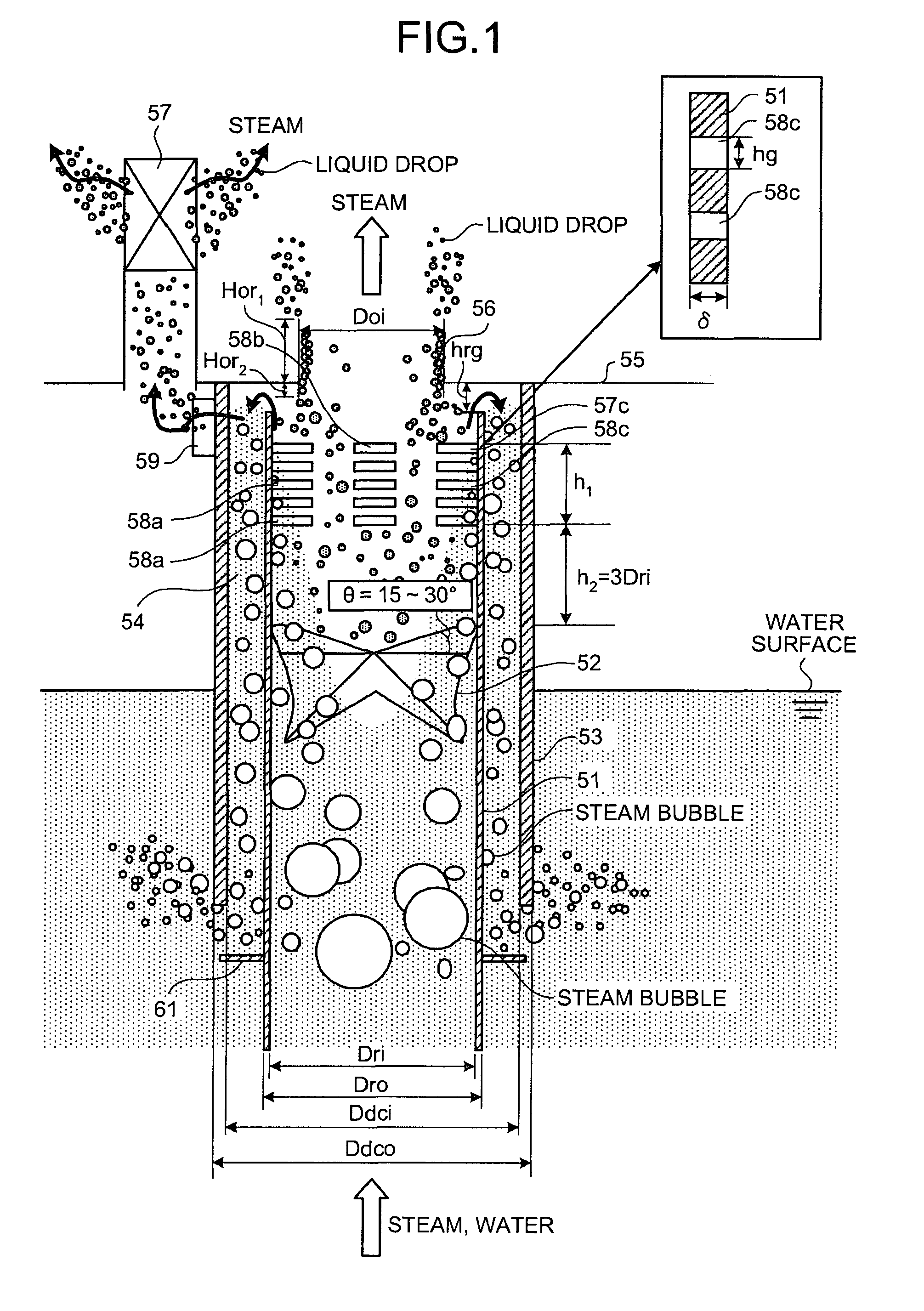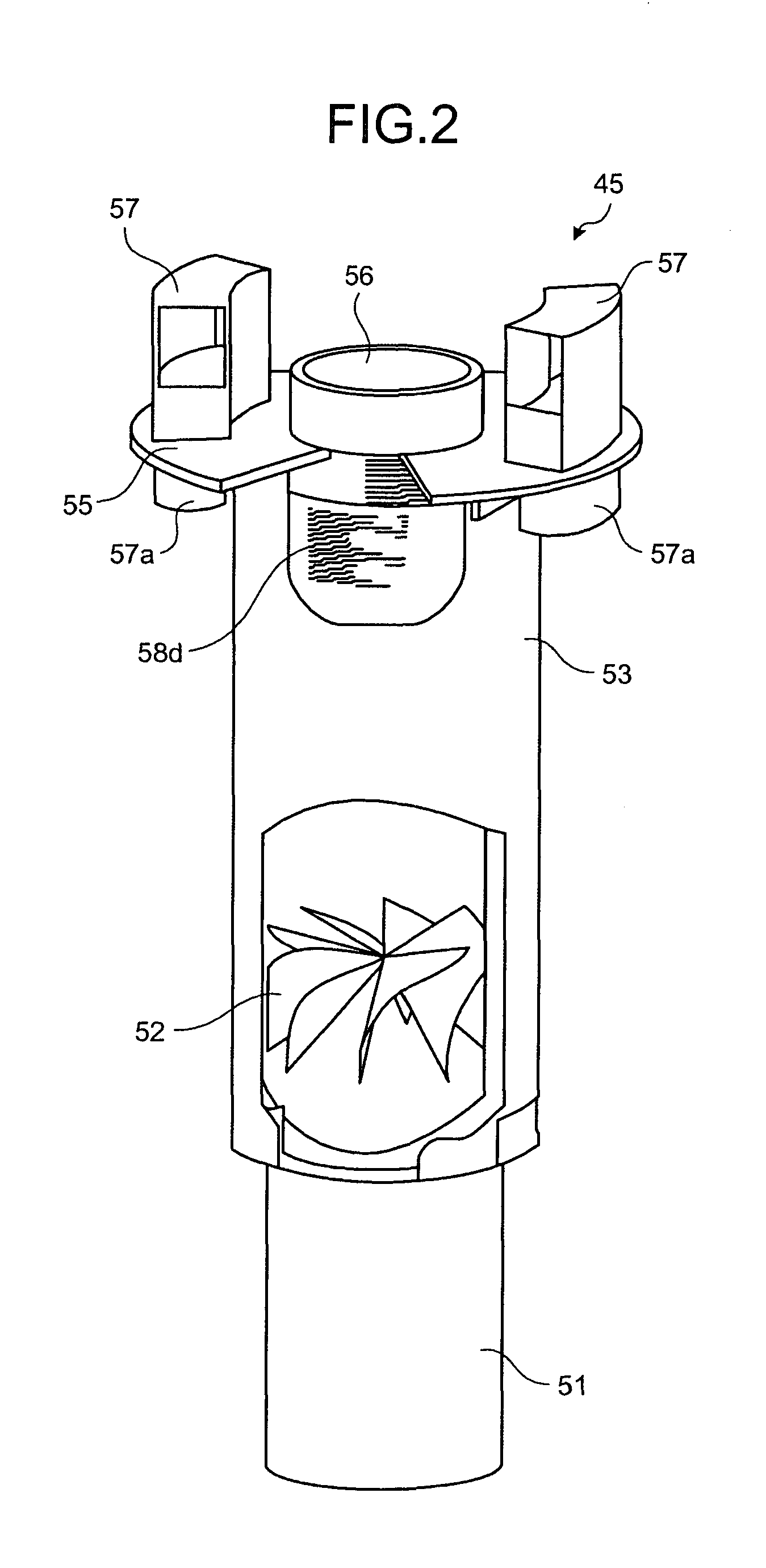Steam-water separator
a technology of steam-water separator and separator, which is applied in the direction of steam separation arrangement, separation process, greenhouse gas reduction, etc., can solve the problems of reducing steam-water separating efficiency, achieve enhanced steam-water separating efficiency, prevent steam from flowing, and enhance steam-water separating efficiency
- Summary
- Abstract
- Description
- Claims
- Application Information
AI Technical Summary
Benefits of technology
Problems solved by technology
Method used
Image
Examples
embodiments
[0067]FIG. 1 is a schematic diagram of relevant parts of a steam-water separator according to an embodiment of the present invention; FIG. 2 is a partly-broken perspective view of the steam-water separator of the embodiment; FIG. 3 is a plan view of the steam-water separator of the embodiment; FIG. 4 is a schematic diagram of slits formed on a riser; FIG. 5 is a schematic diagram of guide units provided on the riser; FIG. 6 is a plan view of the guide unit; FIG. 7 is a cross section of an upper part of the steam-water separator of the embodiment; FIGS. 8A and 8B are schematic diagrams of a swirl vane; FIG. 9 is a graph of a carryunder flow rate with respect to a slit aperture ratio; FIG. 10 is a graph of wetness fraction and a carryunder flow rate with respect to a ratio between height and thickness of the slits; FIG. 11 is a graph of wetness fraction with respect to a distance between the slits and the swirl vane; FIG. 12 is a graph of wetness fraction and resistance with respect t...
PUM
| Property | Measurement | Unit |
|---|---|---|
| twist angle | aaaaa | aaaaa |
| twist angle | aaaaa | aaaaa |
| twist angle | aaaaa | aaaaa |
Abstract
Description
Claims
Application Information
 Login to View More
Login to View More - R&D
- Intellectual Property
- Life Sciences
- Materials
- Tech Scout
- Unparalleled Data Quality
- Higher Quality Content
- 60% Fewer Hallucinations
Browse by: Latest US Patents, China's latest patents, Technical Efficacy Thesaurus, Application Domain, Technology Topic, Popular Technical Reports.
© 2025 PatSnap. All rights reserved.Legal|Privacy policy|Modern Slavery Act Transparency Statement|Sitemap|About US| Contact US: help@patsnap.com



